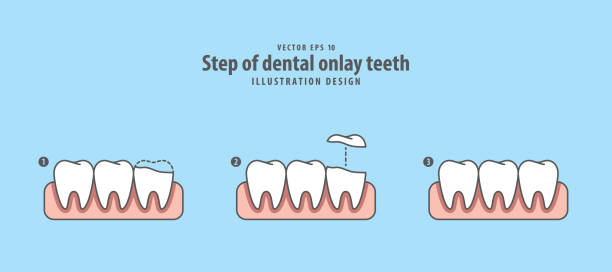
A dental inlay is one of the best cosmetic dentistry treatments for teeth that’s decayed and damaged. It is composite resins or porcelain. Further, the procedure is also called white filling by other dentists. In contrast, these are tailor-made to fit your problem tooth or teeth perfectly.
Although, among the primary reasons why white fillings are preferred by many patients today is that it looks much better than the traditional fillings made of silver amalgam or mercury. While the more advanced type of fillings also presents some risks and disadvantages, they bring many benefits to their wearers.

Having inlays placed on your teeth may increase your teeth’s sensitivity. Although any discomfort or sensitivity experienced is usually temporary. But even so, patients should stay away from taking in food and drinks that are hot, cold, chewy, or crunchy until a few days after the procedure. If you think that the discomfort or sensitivity has been running for too long, consult your dentist immediately.
Like other cosmetic dentistry, the dentist will expose teeth and seal in with artificial material. Besides, there is always a risk of bacterial infection. However, due to the process of taking out the tooth decay and placing over it the inlay, bacteria may be trapped and covered inside the tooth. If you observe any signs of infection, visit your dentist right away. This situation, however, is less likely to occur if you go to a reputable dental professional.

If a dentist applies a local anesthetic on the area where the procedure will be done, there’s a possibility of an allergic reaction. But this usually happens only if the dentist isn’t informed about specific medications or parts of the medical history of the patient that can trigger these allergies. It is why it’s significant to have a thorough initial consultation with your dentist before undergoing any treatment.
But if you’re careful about all the mentioned situations, inlays can give you very satisfying results. One of these is what’s said earlier – inlays are much better to look at than traditional fillings. Inlays look more natural and last longer. Each inlay can be bonded securely to the tooth surface because each is custom-fit. It also allows, minimizes, or even eliminates the possibility of bacterial infection.
Unlike metal fillings, porcelain inlays, in particular, don’t change in shape or size when subjected to temperature changes. They are also easier to clean and more stain-resistant than traditional fillings.
If you’re going to have inlays on your teeth, keep in mind to follow proper oral hygiene and dental maintenance. Inlays are expected to last for at least 20 years.


